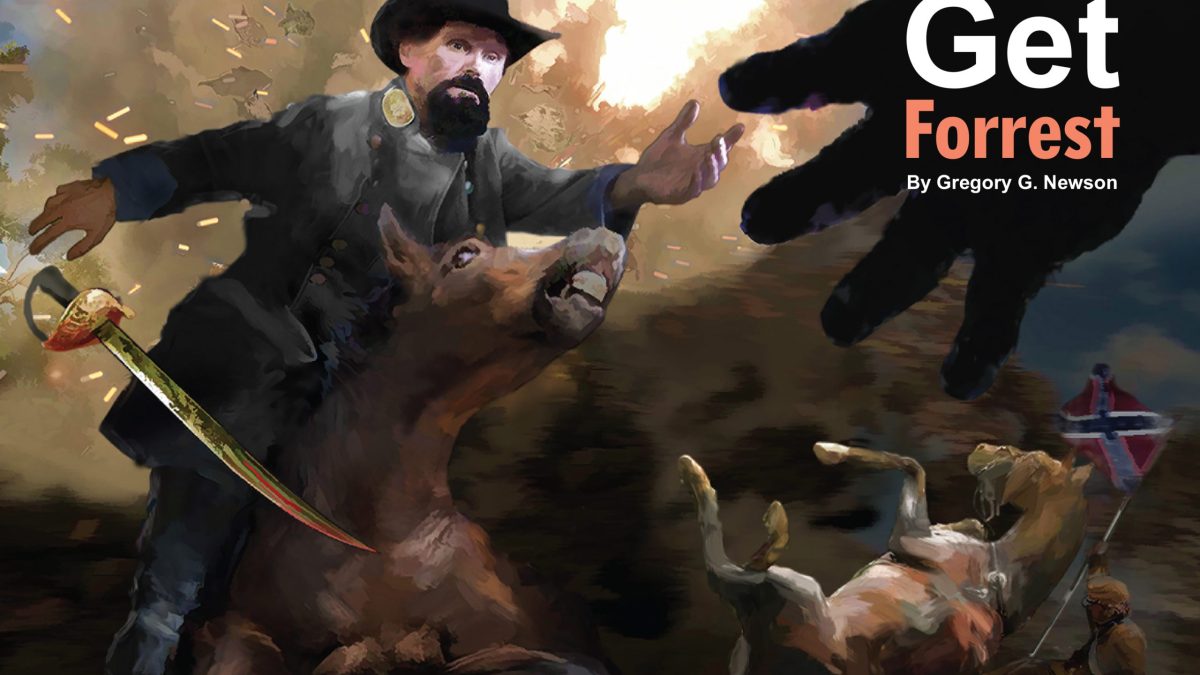This Nathan Bedford Forrest book tells his true story plus what’s been absent from other interpretations of his life, which includes the 45+ black Confederates that volunteered to go to war with Nathan and the 7 who were made his personal bodyguards. With 27+ horses shot out from under Nathan Bedford Forrest, we all must wonder how many were shot out from his bodyguards which probably was the most hazardous job as a Confederate soldier.
But some divine blessing accompanied his 45+ black Confederates because all return home with Forrest and all were given their freedom a year-and-a-half before the end of the American Civil War.
Nathan Bedford’s story is an interesting one. He was born into extreme poverty, aside from this; he had no chance to be in the military. However, his humble background notwithstanding, he was one of the most popular and most controversial cavalrymen of the civil war. Critics like William T. Sherman and Ulysses S. Grant believed that Forrest was a vicious man and most feared in the Alleghenies and Blue Ridge. He was called a devil by Sherman who is also known to have a not too different approach to war. This may not be far from the truth, Forrest‘s actions can be likened to that of a devil. Legend has it that he wrecks havoc wherever he goes. He was a master of destruction, cunny and wicked. He intimidates, tricks, and deceives his victims like in the case of Saber’s edge and gunpowder.
You will surely enjoy this book “Get Forrest”, a real account of a man who loved America dearly and his accomplices (Black Confederates). The artworks and visual descriptions in this book do not portray the accurate picture of the 18th century. The artistic page design regarding scenery settings and clothing are all my “Gregory Newson” ideas as an artist. The visual effects are imaginary and are not the authentic replication of the scenery of this factual account. However, all texts and writing are real and the exact account of what happened. The best part of this story for me as the author of this book is the volunteer Confederate soldiers -Nathan Bedford and his 45+ blacks. Seven of these soldiers became Bedford’s private bodyguards, and he vowed to his volunteers to make them free men whether they win or lose the battle. He proved to be a man of his words when 18 months before the end of the war, they gained their freedom.
By the end of the American Civil War, the number of dead people was 620,000. However, Forrest did not lose any of his black soldiers during the battles, which made it seems as if they were backed by divine forces, indeed, “ a divine hand must have played a role.”
The announcement of Bedford’s, (fondly called ‘Bed” by loyalists) demise in Memphis, Tennessee was like that of a hero, he was described as a great Confederate Calvary officer. According to reports, he died from severe complications of diabetes at his brother, Jesse’s house in Memphis.
After the Civil War was won, the victors (both Northern and Southern Unionists) had to win the peace as well. It was not a given that the South would be reconciled to the Union; there was lots of precedent for the statesmen and the South could have become a running sore, a cauldron of low-level insurrection and guerrilla warfare that blighted the next century of U.S.A history. Instead, the South is now the most patriotic region of the U.S.A. – How did this happen?
Looking back, we can see that between 1865 and around 1914 the Union and the former South negotiated an imperfect but workable peace. The first step in that negotiation took place at Appomattox when the Union troops accepting General Robert E. Lee’s surrender saluted the defeated and allowed them to retain their arms, treating them with the most punctilious military courtesy due to honorable foes. The political leaders of the revolt were not tried and executed. Instead, they were spared to urge reconciliation and generally did. By all historical precedent, they were treated with shocking leniency. This paid off.
The statues and monuments that are under attack were mostly erected between 1865 and 1914 by organizations like; the Daughters of the Confederacy who were fully invested in the soft version of the Lost Cause romanticism. My cultural and political ancestors, the Yankees got out of the statue-builders’ way because we understood that the statue-builders were, in fact, cooperating in the great settlement between South and North. Making heroes of the rebels was not a large price to pay if it meant that Southern pride became American pride.
Our history sometimes involves terrible judgment and shocking inhumanity to our fellow humans, but we should not hide that history. We should, instead, learn from our flaws, recognize our progress, and acknowledge that still, more progress must come.” “Monuments are an important part of interpreting our historic sites.They provide focal points not just for the events they commemorate, but also for how we as a nation have come to grips with that history in the years that followed.” On battlefields, they also provide focal points and iconography that help visitors understand that these are not “every day” locations, but the hallowed ground where Americans of all sides struggled to deal with the wrenching issues that divided our nation then, forging the country we are today.

